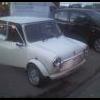Single Wipe Not Working
Started by
lolipop
, Sep 23 2009 07:16 PM
10 replies to this topic
#1

Posted 23 September 2009 - 07:16 PM
My wipers work on both speeds and park correctly,but wont do the single wipe when pushing the stalk down.Can anyone point me in the right direction of where to look/which wires to check.is there a relay for the single wipe?
#2

Posted 23 September 2009 - 07:25 PM
What Mini is it? It does make a difference to the answer, I'm not just being difficult. There are questions on the new thread form for a reason.
#3

Posted 23 September 2009 - 07:30 PM
Its a 1993 Rio.
#4

Posted 23 September 2009 - 07:38 PM
OK, then there's no relay or controller and there is no special wiring for the flick wipe. It uses the same wiring as the rest of the functions so if everything else works there's nothing wrong with the wires, park switch or motor. The problem is in the stalk switch. You'll have to take the column cowl off, take the switch off the plate and look inside. Be careful nothing springs out when you remove the switch. There are springs and small contacts that can come loose inside. If you can get a photo of the inside of the switch it would help.
#5

Posted 23 September 2009 - 07:44 PM
Thanks Dan,I will have a look in daylight.Cheers
#6

Posted 23 September 2009 - 10:42 PM
Its a 1993 Rio.
hi there mine has that problem aswell, its a 1989 racing green?? do i look for the same problem? cheers
#7

Posted 23 September 2009 - 10:50 PM
Yes, if the problem's the same. All Minis from the introduction of two speed wipers upto '96 have the same system.
#8

Posted 25 September 2009 - 04:07 PM
Had a look today,but forgot to take a pic.
I found the 12v supply and can see how the 2 speeds work,but for the flick wipe,it just moves the contact to a single connector (Brown/Green wire) so I cant see how it would supply voltage to the wipers.Doesn't seem to be anything broken,but I will investigate through the auto jumble at Combe tomorrow to see if there is any differences in switches.
I found the 12v supply and can see how the 2 speeds work,but for the flick wipe,it just moves the contact to a single connector (Brown/Green wire) so I cant see how it would supply voltage to the wipers.Doesn't seem to be anything broken,but I will investigate through the auto jumble at Combe tomorrow to see if there is any differences in switches.
#9

Posted 25 September 2009 - 09:01 PM
Mine doesn't work on flick wipe either, although I'm using a second hand set of stalks as my originals packed in.
To be honest I could get the flick wipe to work when connected up, but once I attached the column stalks in place and refitted everything it stopped working.
I'm not bothered though as I only need to flick the stalk up and down to get a similar effect anyway.
To be honest I could get the flick wipe to work when connected up, but once I attached the column stalks in place and refitted everything it stopped working.
I'm not bothered though as I only need to flick the stalk up and down to get a similar effect anyway.
#10

Posted 26 September 2009 - 12:15 PM
It'll help if I tell you briefly how it works.
The motor has its own power supply. That's how it can keep turning and self park after you switch it off. The park switch on the motor interrupts this supply when the blades reach the park position. In order for the motor to actually stop when this happens though the parking wire must be connected to the low speed wire and that's what happens in the stalk switch when it's turned off. If these two wires aren't connected the motor will take a while to slow down and will ride straight over the park switch so it would start itself up again. The park wire (brown/light green) being connected to the low speed wire (red/light green) in the stalk switch means that when the park switch eventually activates as the motor reaches the stop position, the motor shorts itself out and stops dead. There is no power connected at this stage so all that is shorted out is the current left in the motor. These are the terminals that you can see being disconnected when you use the flick wipe in the stalk. To make the motor actually move though there needs to be a little injection of power on the low speed wire (now disconnected from the park wire) to bump it off the park position. The internal layout of the switch has all the contacts in a straight line as you have seen so that makes it difficult for the low speed wire to get this lump of current when the switch flicks in that direction. To avoid having to build a two pole switch Lucas had a cunning plan. The return spring for the flick wipe is used to bridge the power supply contact (green wire in the switch harness, light green/orange in the wiring) to the low speed contact (red/light green) when the switch is flicked down. This spring is set so that it doesn't touch any other contacts in any position. So when you flick the switch the low speed and park terminals are disconnected first, then as you reach the end of travel this little spring touches home and supplies power to the low speed wire. It's a clever design. The problem in your switch is probably down to the spring being out of place or bent. If you are bending it back make sure it only touches the right contacts at the right time and make your adjustments to it with the power off. If you let it give power to the low or high speed wires while the motor is parked there will be smoke!
The motor has its own power supply. That's how it can keep turning and self park after you switch it off. The park switch on the motor interrupts this supply when the blades reach the park position. In order for the motor to actually stop when this happens though the parking wire must be connected to the low speed wire and that's what happens in the stalk switch when it's turned off. If these two wires aren't connected the motor will take a while to slow down and will ride straight over the park switch so it would start itself up again. The park wire (brown/light green) being connected to the low speed wire (red/light green) in the stalk switch means that when the park switch eventually activates as the motor reaches the stop position, the motor shorts itself out and stops dead. There is no power connected at this stage so all that is shorted out is the current left in the motor. These are the terminals that you can see being disconnected when you use the flick wipe in the stalk. To make the motor actually move though there needs to be a little injection of power on the low speed wire (now disconnected from the park wire) to bump it off the park position. The internal layout of the switch has all the contacts in a straight line as you have seen so that makes it difficult for the low speed wire to get this lump of current when the switch flicks in that direction. To avoid having to build a two pole switch Lucas had a cunning plan. The return spring for the flick wipe is used to bridge the power supply contact (green wire in the switch harness, light green/orange in the wiring) to the low speed contact (red/light green) when the switch is flicked down. This spring is set so that it doesn't touch any other contacts in any position. So when you flick the switch the low speed and park terminals are disconnected first, then as you reach the end of travel this little spring touches home and supplies power to the low speed wire. It's a clever design. The problem in your switch is probably down to the spring being out of place or bent. If you are bending it back make sure it only touches the right contacts at the right time and make your adjustments to it with the power off. If you let it give power to the low or high speed wires while the motor is parked there will be smoke!
#11

Posted 27 September 2009 - 02:11 PM
Thinking about it though, try removing the steering column shroud, because it's possible that the column stalks need a bit of adjusting/repositioning as it could be that where their fixed at the moment means you're not able to push the stalk all the way down to get the flick wipe to work.
It can happen and there's only 3 screws to remove, 1 either side of the column shroud and 1 at the base.
It comes off in 2 sections and with it removed you just might find the flick wipe works then, although I know it doesn't in my case.
I'm told this is the correct position of the wiper stalk internals: -

It can happen and there's only 3 screws to remove, 1 either side of the column shroud and 1 at the base.
It comes off in 2 sections and with it removed you just might find the flick wipe works then, although I know it doesn't in my case.
I'm told this is the correct position of the wiper stalk internals: -

1 user(s) are reading this topic
0 members, 1 guests, 0 anonymous users
















